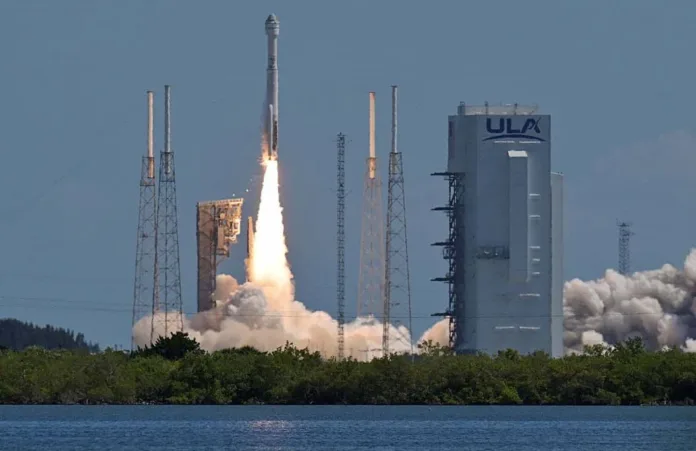NASA and Boeing delay return plans for Starliner spacecraft as technical challenges persist, leaving astronauts at the international space station longer than expected
Boeing’s Starliner spacecraft is facing a prolonged stay at the International Space Station (ISS) following a series of technical setbacks, marking another chapter in its troubled journey.
Originally slated for a swift return to Earth after encountering helium leaks and thruster failures during its journey to the ISS earlier this month, Starliner’s departure has been postponed. NASA and Boeing have opted for an extended stay to meticulously plan the astronauts’ safe return.
NASA astronauts Butch Wilmore and Suni Williams launched aboard Starliner on June 5, faced multiple challenges during their 24-hour journey, including four helium leaks and five thruster failures. These issues prompted the decision to delay the return to Earth, now scheduled for no earlier than June 22, with potential further extensions.
“The extra time allows the team to finalise departure planning and operations while the spacecraft remains cleared for crew emergency return scenarios within the flight rules,” NASA and Boeing stated, emphasising safety protocols.
Starliner, designed for potential six-month missions, is limited to a maximum 45-day stay at the ISS during its current mission phase. The return journey is anticipated to span approximately six hours, targeting landing sites in Utah’s desert or alternative locations contingent on local weather conditions.
This mission, Starliner’s first with astronauts aboard, serves as a critical test in Boeing’s protracted and costly development program. Successful completion is pivotal for NASA’s certification of routine astronaut missions, augmenting its fleet alongside SpaceX’s Crew Dragon.
Throughout its stay at the ISS, Starliner encountered additional challenges, including a fifth helium leak affecting propulsion thrusters and a stuck oxidizer valve. These in-flight issues compound Boeing’s historical struggles with Starliner, highlighted by a 2019 uncrewed test failure due to software glitches and design flaws, followed by a successful repeat test in 2022.
Looking ahead, Boeing faces ongoing tasks to operationalise Starliner for non-NASA customers, contingent upon successful return and resolution of technical challenges.
Analysis:
- Political: The extended stay of Starliner at the ISS underscores NASA’s and Boeing’s commitment to stringent safety protocols and operational readiness, amid ongoing scrutiny of private-sector contributions to space exploration.
- Social: Public interest in space missions remains high, fuelled by the allure of human spaceflight and the technical prowess required to sustain missions like Starliner’s amid persistent challenges.
Economic: Boeing’s prolonged efforts to certify Starliner highlight the substantial investments and risks associated with aerospace innovation, influencing market dynamics and future commercial opportunities in space travel.
